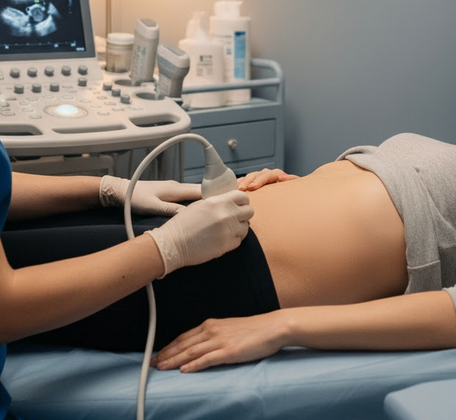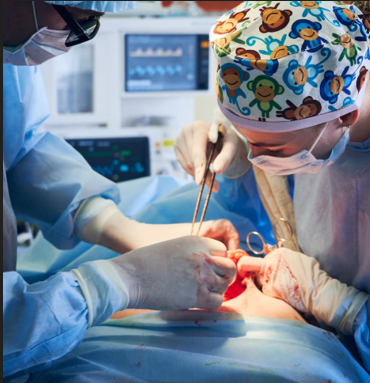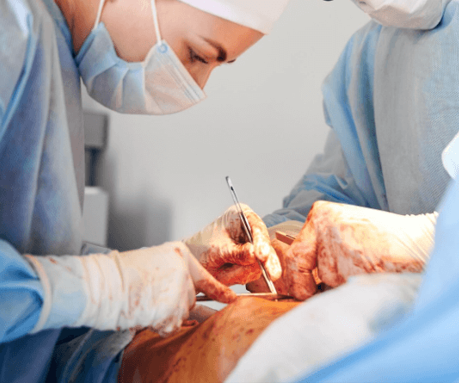Treatment Overview
The Pelvic Floor Preservation Uterus Removal Surgery in Korea represents a cutting-edge evolution of traditional hysterectomy, designed to remove the uterus while maintaining the strength and integrity of the pelvic floor. This approach combines advanced laparoscopic or robotic-assisted surgery with specialized pelvic floor reconstruction techniques, ensuring that pelvic support, bladder control, and sexual function are preserved after surgery.
Korean gynecologic centers are globally acclaimed for integrating pelvic reconstructive surgery, nerve-sparing methods, and 3D imaging guidance into uterus removal procedures. This unique blend of surgical innovation and anatomical precision makes Korea one of the top destinations for women seeking uterus removal without compromising pelvic health and function.
Purpose & Benefits
Purpose:
- Safely remove the uterus while protecting pelvic organs, nerves, and muscle support structures.
- Prevent postoperative pelvic floor dysfunction, such as prolapse or incontinence.
- Maintain optimal pelvic stability and enhance overall quality of life after surgery.
Benefits:
- Preservation of pelvic support and natural anatomy
- Reduced risk of pelvic organ prolapse or urinary issues post-surgery
- Minimal invasiveness with smaller incisions and faster healing
- Less postoperative pain and scarring
- Faster recovery and return to normal activities
- Improved pelvic balance, posture, and confidence
Ideal Candidates
This specialized procedure is ideal for women who:
- Require hysterectomy due to fibroids, adenomyosis, endometriosis, or prolapse
- Want to preserve pelvic floor strength and function
- Have a history or risk of pelvic floor weakness
- Are seeking a minimally invasive approach with advanced reconstructive support
- Wish to maintain bladder, bowel, and sexual function post-surgery
Korean hospitals perform detailed pelvic floor evaluations, including dynamic MRI and muscle mapping, to design a customized surgical plan for each patient.
Possible Risks & Complications
Although this surgery is considered safe and precise, possible risks include:
- Minor bleeding or infection
- Temporary urinary retention or discomfort
- Injury to surrounding organs (rare)
- Pelvic pain or muscle weakness (uncommon with proper rehab)
- Anesthesia-related complications
Korean surgeons minimize risks through nerve-sparing dissection, real-time imaging, and microsurgical suturing techniques that safeguard muscle and nerve integrity.
Surgical Techniques Used
Korea’s pelvic-preserving uterus removal procedures utilize the most advanced gynecologic surgical systems:
- 3D High-Definition Laparoscopy or Robotic Surgery: Enhances precision in deep pelvic areas.
- Nerve-Sparing Techniques: Preserve autonomic nerves for bladder and sexual function.
- Pelvic Floor Reconstruction: Re-supports ligaments and muscles after uterus removal.
- Mesh-Free or Biologic Reinforcement: Maintains natural pelvic anatomy and avoids synthetic mesh complications.
- Energy-Based Sealing (Ultrasonic/Bipolar Devices): Ensures bloodless dissection and minimal tissue trauma.
- Fluorescence Imaging (ICG): Identifies blood flow and nerve structures during surgery.
These refined Korean methods ensure the uterus is removed safely while the pelvic floor remains intact and functional.
Recovery & Aftercare
Recovery after pelvic floor preservation uterus removal is typically fast, thanks to minimally invasive methods and structured rehabilitation. Most patients can resume light activities in 1–2 weeks and return to full function within 4–6 weeks.
Postoperative care includes:
- Regular pelvic physiotherapy and muscle strengthening
- Avoiding heavy lifting for 6 weeks
- Pain management and scar care
- Bladder training or biofeedback therapy (if necessary)
- Nutritional and hormonal support
Korean hospitals emphasize comprehensive rehabilitation, often including pelvic floor physiotherapy, core stability exercises, and personalized wellness coaching.
Results & Longevity
This advanced surgery offers excellent long-term outcomes:
- Full removal of uterine disease
- Maintenance of pelvic floor strength and integrity
- Prevention of prolapse or incontinence
- Enhanced quality of life, posture, and comfort
- Long-lasting functional and aesthetic results
Korean gynecologic surgeons are internationally recognized for achieving superior results with minimal recurrence of pelvic dysfunction.
Treatment Process in Korea
The treatment process in Korea follows a personalized, holistic structure:
- Comprehensive Evaluation: Includes pelvic imaging, dynamic floor analysis, and consultation.
- Customized Surgical Planning: Tailored to uterine condition and pelvic floor health.
- Minimally Invasive Uterus Removal with Reconstruction: Laparoscopic or robotic surgery preserving nerve and muscle structures.
- Postoperative Rehabilitation: Guided recovery with physiotherapy and regular follow-ups.
Korean hospitals also offer international patient support, ensuring smooth coordination for travel, accommodation, and post-surgical recovery.
Cost Range
The Pelvic Floor Preservation Uterus Removal Surgery in Korea typically costs between USD 10,000 and 18,000, depending on:
- Surgical complexity and technology used (laparoscopic vs robotic)
- Surgeon’s expertise and hospital reputation
- Extent of pelvic reconstruction required
- Duration of hospital stay and aftercare programs
This cost generally includes preoperative tests, anesthesia, surgery, hospitalization, and rehabilitation.
Popular Clinics
- Asan Medical Center (Seoul): Specializes in pelvic reconstructive hysterectomy and advanced nerve-sparing surgery.
- Severance Hospital (Yonsei University Health System): Renowned for robotic pelvic floor-preserving gynecologic procedures.
- Samsung Medical Center (Seoul): Offers 3D high-definition laparoscopic and robotic uterus removal with pelvic support focus.
- CHA Gangnam Medical Center: Expert in holistic pelvic floor rehabilitation and women’s recovery programs.
- Ewha Womans University Medical Center: Pioneering center for pelvic floor-preserving laparoscopic surgery in women’s health.




